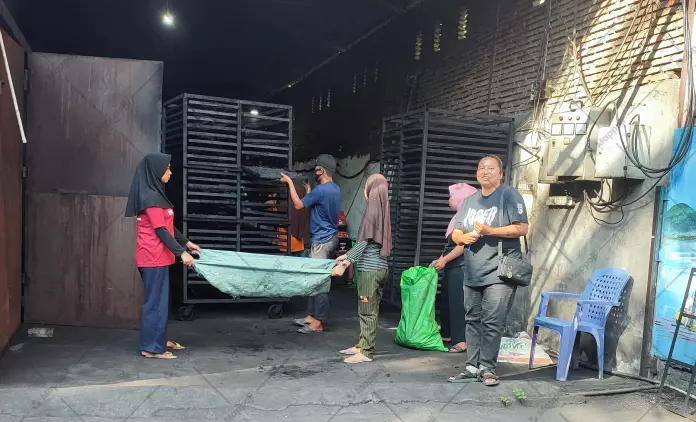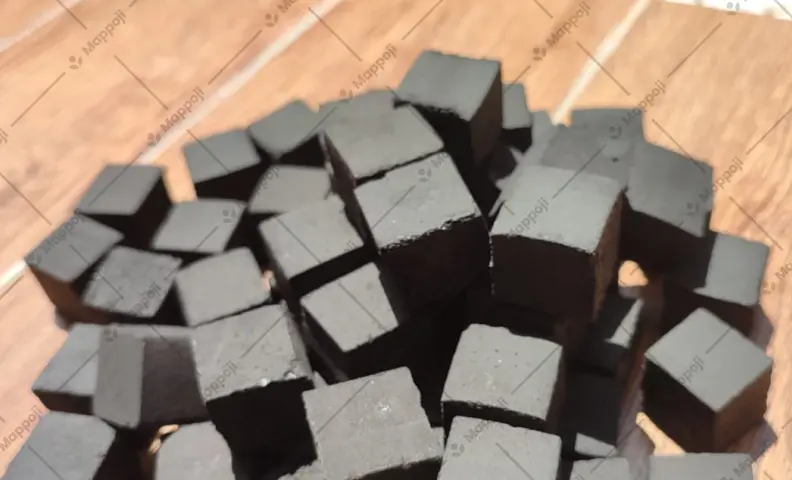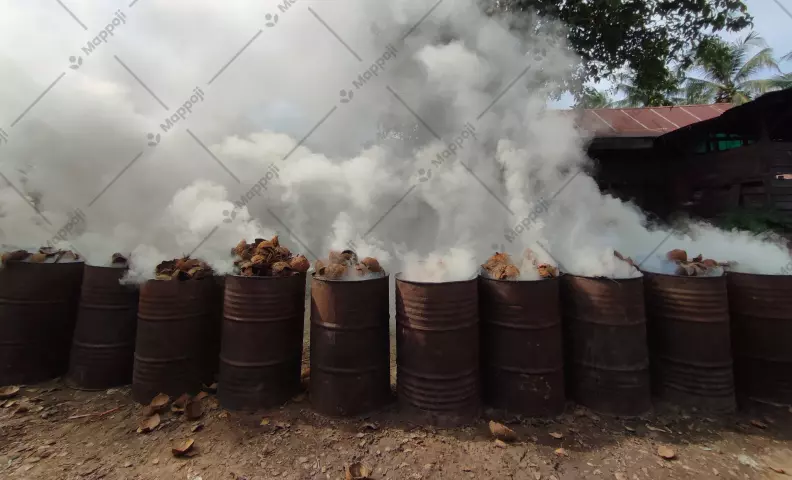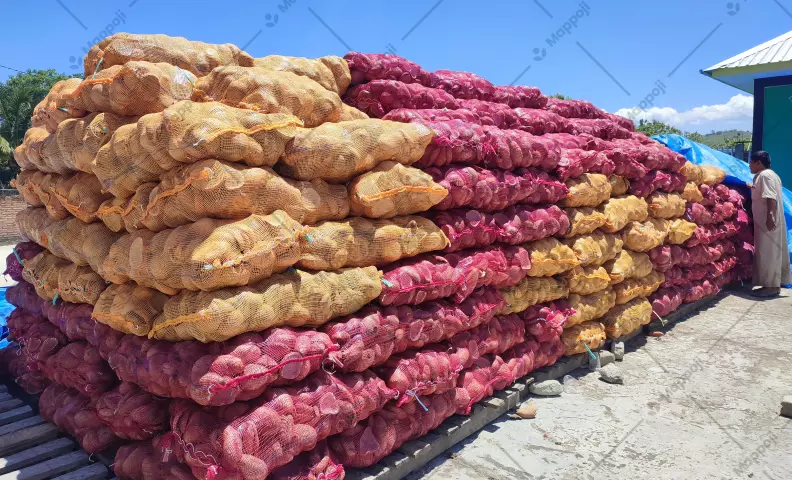Sep 13, 2022 | Product
The Science of Drying Briquettes: Choosing the Right Method

Achmad Alimin

Odha checking the drying process for our premium briquettes. Image Credit:
Mappoji
Mappoji - In the production of briquettes, the drying process holds significant importance to
ensure optimal quality and performance. Proper drying eliminates excess moisture, enhances
combustion efficiency, and prevents the growth of molds or fungi. One effective method of drying
briquettes is through the use of ovens, where they are subjected to high temperatures.
Alternatively, sunlight can also aid in the drying process. In this article, we will delve into the
intricacies of drying briquettes and explore the benefits of using ovens and sunlight to achieve the
desired results.
Understanding the Drying Process
The drying process for briquettes involves the removal of moisture to improve their calorific value
and combustion efficiency. Briquettes are typically made from organic materials such as biomass,
charcoal, or agricultural residues, which contain varying levels of moisture. By reducing the
moisture content, the briquettes become more stable, easier to handle, and have improved combustion
characteristics.
Drying with an Oven
Using an oven for drying briquettes is a common and effective method employed by manufacturers. Ovens
provide controlled and uniform heating, ensuring thorough drying and consistent results. When drying
briquettes in an oven, a temperature of around 650 degrees Celsius is typically used. This high
temperature accelerates the drying process and helps remove moisture efficiently.
The oven drying process involves placing the briquettes on trays or racks, ensuring proper air
circulation for even drying. The briquettes are then placed inside the preheated oven, and the
temperature is maintained at the desired level throughout the drying duration. The exact drying time
can vary depending on factors such as the briquette composition, size, and initial moisture content.
Benefits of Oven Drying
Drying briquettes using an oven offers several advantages:
-
Controlled Environment: Ovens provide a controlled drying environment, allowing
manufacturers to set and maintain the desired temperature consistently. This control ensures
optimal drying conditions and minimizes the risk of under or over-drying the briquettes.
-
Efficient and Uniform Drying: The high temperature in ovens facilitates rapid moisture
removal, leading to shorter drying times. The uniform heat distribution within the oven ensures
that all briquettes are dried evenly, reducing the likelihood of variations in moisture content
among the briquettes.
-
Flexibility and Adaptability: Oven drying offers flexibility in terms of batch sizes and
allows manufacturers to adjust drying parameters to suit specific briquette formulations. This
adaptability is particularly beneficial for production lines with varying briquette compositions
or moisture content.
Drying with Sunlight
In addition to oven drying, sunlight can also be utilized to aid the drying process of briquettes.
Sun drying is a traditional and natural method of removing moisture from biomass-based products. It
is especially beneficial in regions with abundant sunlight and where access to ovens or advanced
drying equipment may be limited.
To dry briquettes using sunlight, they are spread out in a single layer on clean and dry surfaces
such as drying racks or open fields. The briquettes are exposed to direct sunlight for several days,
with regular turning or flipping to ensure uniform drying. Sun drying times can vary depending on
the weather conditions, briquette size, and initial moisture content.
Benefits of Sun Drying
Sun drying offers its own set of advantages for drying briquettes:
-
Cost-effective: Sun drying eliminates the need for energy-intensive drying methods, such
as oven drying, thereby reducing operating costs and energy consumption.
-
Natural and Environmentally Friendly: Sun drying is a sustainable and environmentally
friendly approach, utilizing renewable solar energy to facilitate the drying process. It
eliminates the need for fossil fuels or electricity, reducing the carbon footprint associated
with briquette production.
-
Preservation of Aromas and Flavors: Sun drying allows the briquettes to dry naturally,
preserving their inherent aromas and flavors. This can be particularly advantageous for
briquettes intended for cooking or flavor-specific applications.
Combining Drying Methods
In some cases, a combination of oven drying and sunlight drying can be employed to maximize
efficiency and reduce overall drying time. Manufacturers may opt for an initial drying phase in the
oven to remove a significant portion of moisture quickly. The briquettes are then transferred to
open-air or sunlight-exposed drying areas for further drying and moisture equalization.
It is important to note that regardless of the drying method used, proper storage conditions must be
maintained to prevent reabsorption of moisture. Fully dried briquettes should be stored in dry and
well-ventilated areas to preserve their quality until they are ready for packaging or use.
In conclusion, the drying process for briquettes is a critical step in ensuring their quality and
performance. Ovens offer controlled and efficient drying, while sunlight provides a natural and
cost-effective alternative. Manufacturers can choose the most suitable drying method based on their
resources, production volume, and desired product characteristics. By implementing proper drying
techniques, briquette producers can enhance the quality, combustion efficiency, and market value of
their products, ultimately contributing to a sustainable and eco-friendly energy solution.
We look forward to hearing from you and to the possibility of working together. Please don't hesitate
to contact us. Our team is always happy to help and can provide you with
the information you need to make an informed decision.




